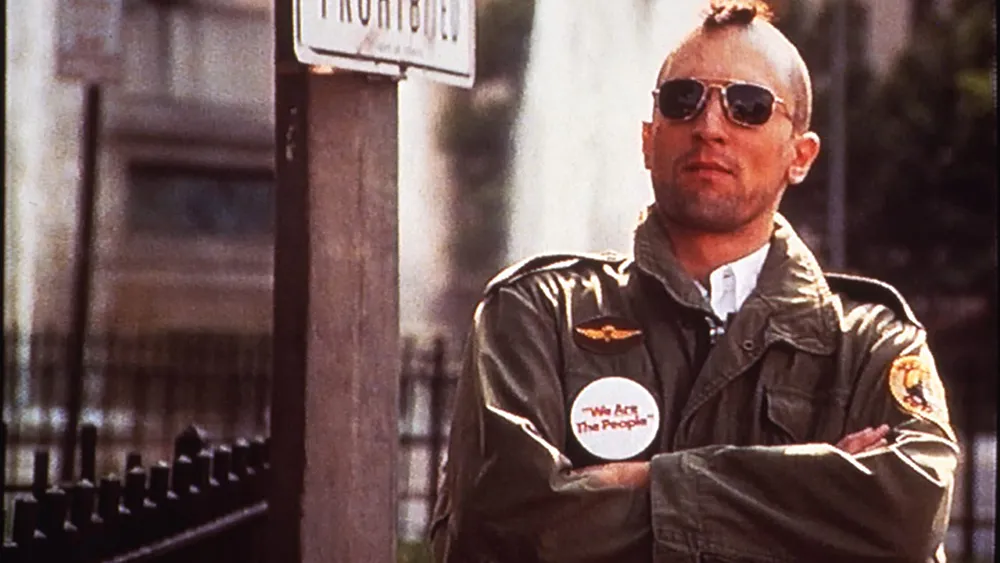A Disturbing Dive into Isolation and Madness
Martin Scorsese’s Taxi Driver (1976) is a haunting character study that explores loneliness, alienation, and the psychological breakdown of an individual rejected by society. Anchored by Robert De Niro’s unforgettable performance and Paul Schrader’s sharp screenplay, the film remains one of the most unsettling yet captivating works of cinema.
Robert De Niro’s Impeccable Performance
Robert De Niro delivers a career-defining performance as Travis Bickle, a Vietnam War veteran turned insomniac cab driver navigating New York City’s filth-ridden streets. His portrayal of a man slowly descending into madness is both mesmerizing and terrifying. Whether it’s his awkward attempts at social interaction, his gradual frustration with the decaying morality around him, or his chilling transformation into a vigilante, De Niro embodies Travis with raw intensity. His famous “You talkin’ to me?” scene, improvised during filming, has become one of the most iconic moments in cinematic history. Through subtle gestures, shifting expressions, and a voice that teeters between quiet restraint and explosive rage, De Niro makes Travis Bickle a deeply disturbing yet strangely sympathetic character.
Cinematography & Direction – A City That Feels Like a Nightmare
Scorsese’s direction, combined with Michael Chapman’s cinematography, creates a suffocating, almost nightmarish vision of 1970s New York. The city is portrayed as grimy, neon-lit, and perpetually damp, mirroring Travis’s deteriorating mental state. The way the camera lingers on the rain-soaked streets, the seedy diners, and the hollow eyes of people walking by adds to the film’s uncomfortable atmosphere. The use of Bernard Herrmann’s eerie yet melancholic score heightens this unease, making every frame feel like a descent into paranoia.
Scorsese also employs first-person perspectives that pull us deep into Travis’s disturbed psyche, forcing us to see the world through his disillusioned eyes. As the film progresses, the editing and pacing become increasingly erratic, reflecting his growing instability. The climactic shootout is brutal and shocking, not glorified, making it one of the most unsettling endings in film history.
The Exclusion of a Simple Mind
At its core, Taxi Driver is a film about a man desperately trying to belong in a world that has no place for him. Travis is not inherently evil—he is lonely, lost, and unable to navigate social norms. His inability to connect with others, whether it’s his disastrous date with Betsy (Cybill Shepherd) or his unsettling interactions with the child prostitute Iris (Jodie Foster), highlights how society disregards those who don’t fit a conventional mold.
His simple, black-and-white view of morality leads him down a dangerous path. In his mind, the world is divided into good and evil, and since no one guides him, he takes it upon himself to be a “savior.” But society never acknowledges his suffering—he is just another nameless, invisible man.
Conclusion
Taxi Driver is not just a film; it’s an experience. It forces the audience to confront uncomfortable truths about isolation, mental health, and the consequences of social neglect. De Niro’s performance, Scorsese’s masterful direction, and the film’s unsettling atmosphere ensure that it remains as powerful and relevant today as it was in 1976.
A Must Watch

